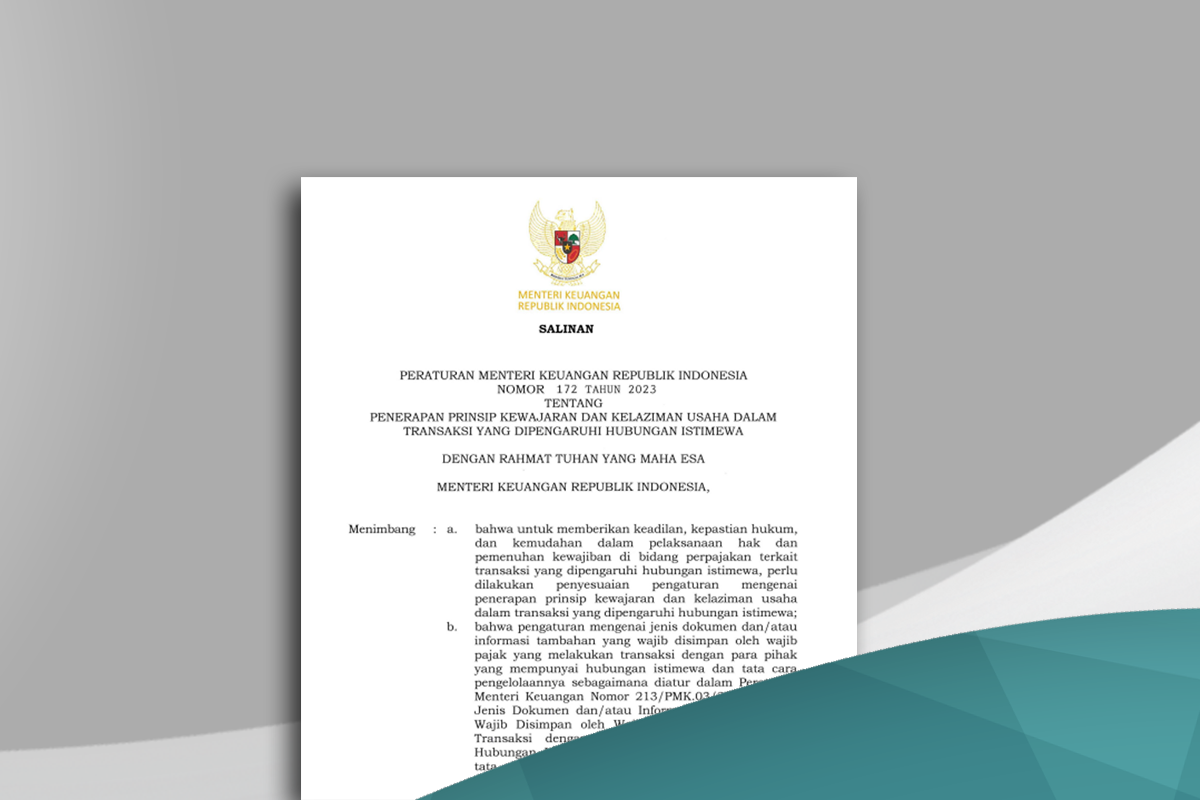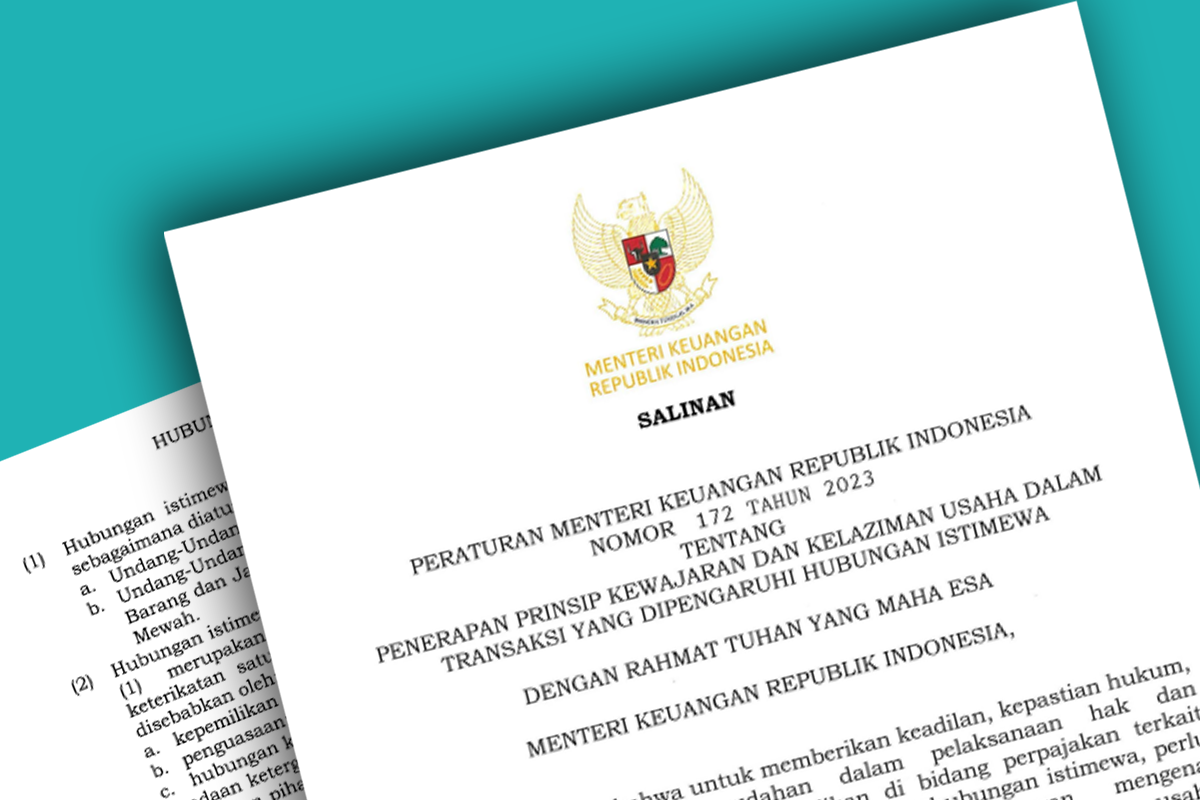In the context of transfer pricing, where companies are faced with the obligation to set transfer prices that are fair and in accordance with market conditions, the Arm's Length Principle (PKKU) becomes the main foundation.
An integral part of applying this principle is conducting a comparability analysis. The aim is to determine whether transactions between affiliates are comparable to independent transactions or not.
To obtain accurate analysis results, reliable and relevant data sources are required. Therefore, Taxpayers need to know what types of comparable data can be used in conducting a comparability analysis.
Definition of Single and Multiple-Year
There are two types of comparable data that can be used. First, comparable data derived from a single year, then the next is comparable data derived from multiple years.
Single-year comparable data is data used as a comparison that comes from a single fiscal year or period. The data used usually comes from the same year or the year closest to the fiscal year of the company being analyzed.
Meanwhile, multi-year comparisons involve the use of data from several fiscal years or several periods. So that the period of the data used is wider, because it covers several years back from the fiscal year of the company being analyzed.
Given the important role of comparable data in determining the results of transfer pricing comparability analysis, the determination of which type of data to use is crucial.
Regulatory Recommendations
The use of single-year and multiple-year comparable data has been regulated in the latest transfer pricing regulation, namely Minister of Finance Regulation 172 Year 2023.
Interestingly, the regulation actually recommends Taxpayers to prefer the use of single-year comparable data over multiple years. The reason is that single-year comparative data is considered to allow Taxpayers to provide a specific picture of the situation in a particular year.
Thus, Taxpayers will be more effective in conducting comparability analysis, as single-year comparable data can illustrate any fluctuations or volatility that occurs or when historical data is not available in sufficient quantity.
However, this does not mean that the use of multi-year comparable data should be ruled out. This is because PMK 172/2023 also states that multiple-year comparative data can be used as long as it can improve the comparability between transactions affected by special relationships and independent transactions.
OECD Reference
Meanwhile, referring to the Organization for Economic Co-operation and Development (OECD) Transfer Pricing Guidelines 2022, the use of multiple-year data is considered to improve transfer pricing analysis.
Furthermore, the report states that the use of multiple years of data can enrich information ranging from business conditions, business cycles, and economic changes that can affect transaction prices.
Thus, it can provide a more holistic understanding of business dynamics and help identify anomalies or significant differences in comparables, thereby increasing the reliability of the analysis results.
In addition, the use of multiple years of data also enables the identification of long-term trends, fluctuations, and patterns that may occur over time. By involving data from multiple years, companies can capture annual variability and external factors that may affect transaction prices.
Therefore, according to the OECD, multiple-year data can help tailor the analysis to actual conditions and minimize the risk of misinterpretation.
Limitations of Multiple Years Data
Although multiple-year data can offer a broader time span and wider coverage, the writer acknowledges that it is not devoid of limitations. It's crucial to recognize that utilizing multiple-year data may not always be the optimal solution for every situation.
Analyses that involve data from multiple years can actually pose risks arising from the limited ability to manage large and complex data. Not only that, data from certain years may not all be relevant or reliable in certain contexts. This limits the added value of using such data.
In this context, taxpayers need to conduct a careful evaluation of whether the use of multiple-year data can actually improve the comparability and reliability of the analysis results.
There are several factors that companies need to look at, in determining the data in a comparability analysis, namely the nature of the company's business, transaction complexity, and regulatory requirements should be carefully considered in choosing the appropriate approach.
1. Nature of the Company's Business
Each company has unique characteristics in terms of business model, operational strategy, and risk profile. When selecting the comparables approach, taxpayers need to consider how well the comparables data represent the nature of their business.
For example, if a company's business tends to be stable from year to year, the use of single-year comparable data may be more appropriate. However, if the company's business is more affected by market fluctuations over a longer period of time, multiple-year comparable data may be more accurate.
2. Transaction Complexity
The level of transaction complexity is also an important factor in choosing a comparables approach. Transactions that involve many variables or complex aspects may require a more in-depth analysis that can be provided by multiple-year comparable data. On the other hand, relatively simple and clear transactions may be adequately analyzed using single-year comparable data.
3. Regulatory Requirements
The transfer pricing regulations applicable in a jurisdiction may also influence the choice between single-year or multiple-year comparable data. Some jurisdictions may have specific requirements or recommendations on the use of comparable data, which may affect the taxpayer's decision. Therefore, it is important to understand the applicable regulatory requirements and ensure that the chosen approach complies with the applicable legal provisions.
By understanding the implications and potential usefulness of both approaches, taxpayers can make better decisions in determining the approach that best suits their business needs and the applicable regulations. In doing so, they can ensure compliance with transfer pricing regulations and improve the reliability of their comparability analysis. (ASP/KEN)







